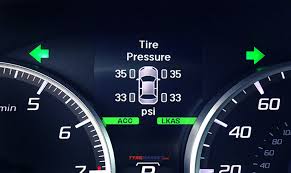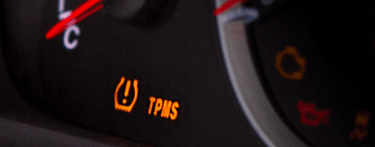TPMS Alerts: Don’t Ignore the Signal for Safety and Efficiency
Blog | Discover the crucial role of the Tire-Pressure Monitoring System (TPMS) in maintaining your vehicle's safety and efficiency. Learn why monitoring tire pressure is vital and what to do when the TPMS light comes on. Ensure a safer drive and longer tire life with expert insights
TPMS
George D.
6/29/20242 min read


Tire-Pressure Monitoring System (TPMS): Why It Matters and What to Do When the Light Comes On
Modern vehicles are equipped with various systems to ensure safety and comfort, one of which is the Tire-Pressure Monitoring System (TPMS). This system monitors tire pressure and alerts drivers to any deviations from the norm. Why is it important, and what should you do if the TPMS light comes on? Let's explore.
Why Is TPMS Important?
1. Safety Assurance
Low tire pressure can lead to serious consequences. It increases the risk of tire blowouts and affects vehicle handling, especially in extreme situations. TPMS provides early warnings, allowing drivers to address potential issues before they become dangerous.
2. Fuel Efficiency
Underinflated tires create more rolling resistance, which means the engine works harder to maintain speed, leading to increased fuel consumption. Maintaining proper tire pressure helps reduce fuel costs.
3. Extended Tire Life
Incorrect pressure causes uneven tire wear, shortening their lifespan. Regular monitoring and maintaining optimal pressure not only extend tire life but also reduce the risk of sudden failures.
What to Do If the TPMS Light Comes On?
1. Immediate Pressure Check
When the TPMS light illuminates, check the pressure in all tires immediately. Use a reliable gauge and compare the results with the recommended values in your vehicle’s manual.
2. Inspect for Damage
After checking pressure, visually inspect the tires for punctures, cracks, or other visible damage. Even minor issues can lead to air leaks and reduced pressure.
3. Visit an Auto Service
If the light remains on despite adjusting the pressure, it may indicate a malfunction in the TPMS itself. It's important to consult professionals for diagnostics and repair. Our team in Northridge is ready to assist with any TPMS issues, ensuring your safety on the road. On average, diagnostics and repair of TPMS issues take about 30-60 minutes.
The Tire-Pressure Monitoring System (TPMS) plays a crucial role in maintaining your vehicle's safety and efficiency. Don’t ignore its alerts — timely service not only ensures your safety but also prolongs tire life and reduces operating costs. Take care of your car, and it will serve you faithfully for years to come.
George D.


George's Alignment & Brake Service
Contacts:
Tel: +1 818 855 6545
Operation hours:
Mon-Fri: 10am - 5pm Sat: 9am - 5 pm
Service areas:
Calabasas Canoga Park Chatsworth Encino Granada Hills Hidden Hills Lake Balboa Northridge
Porter Ranch Reseda Sherwood Forest Tarzana Van Nuys West Hills Winnetka Woodland Hills
